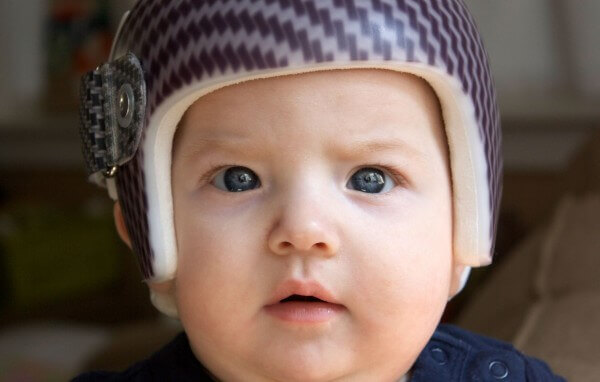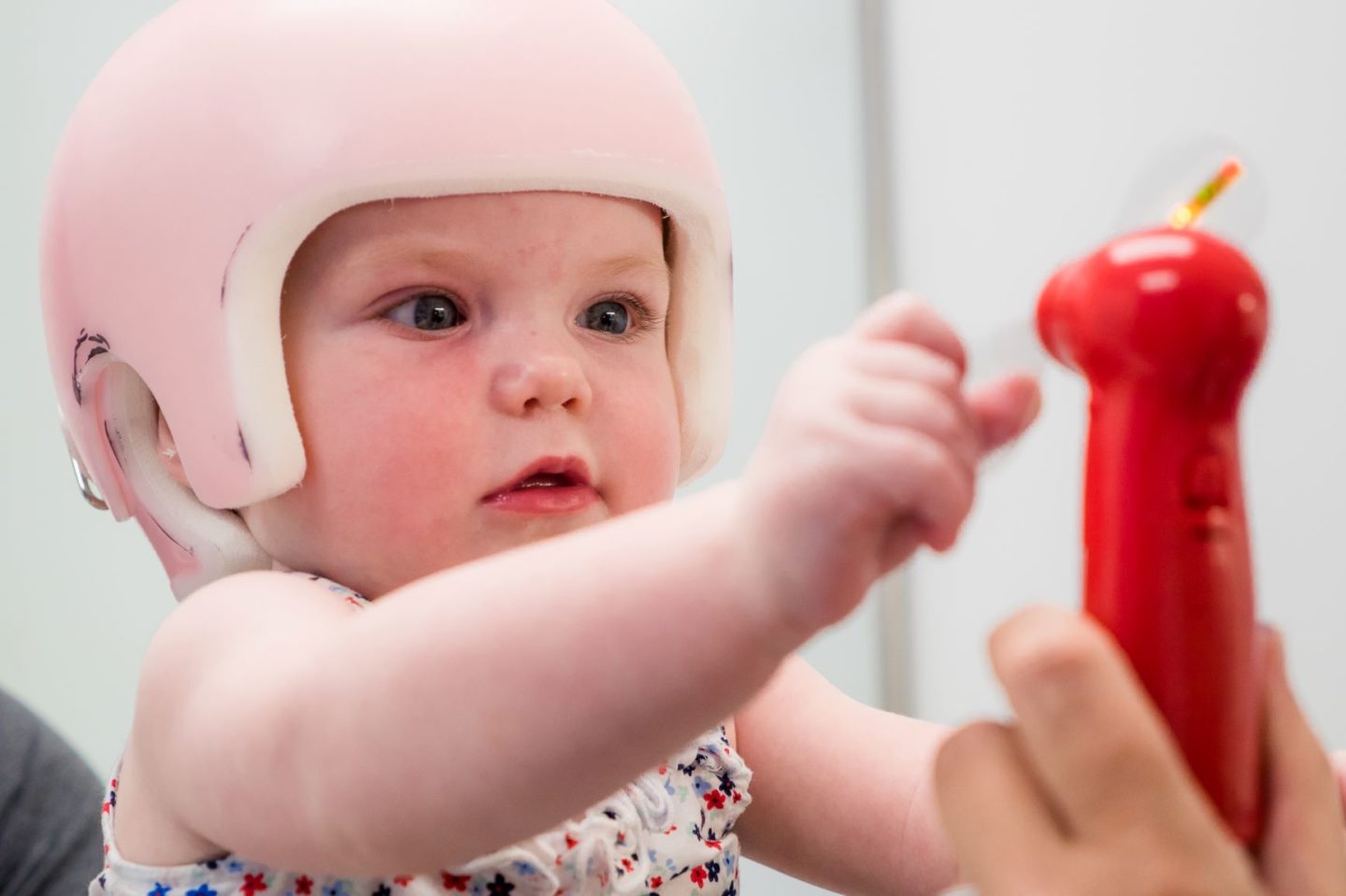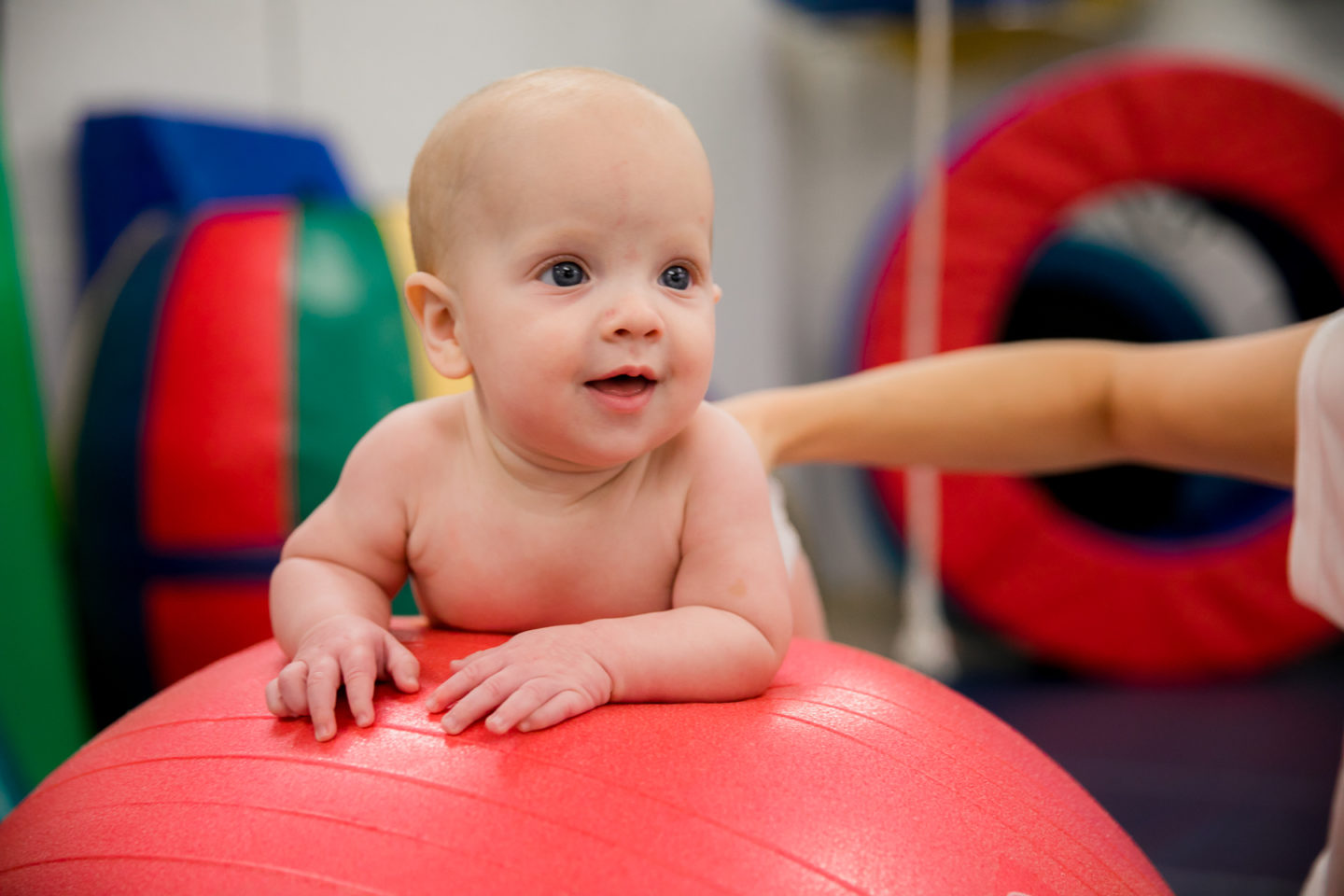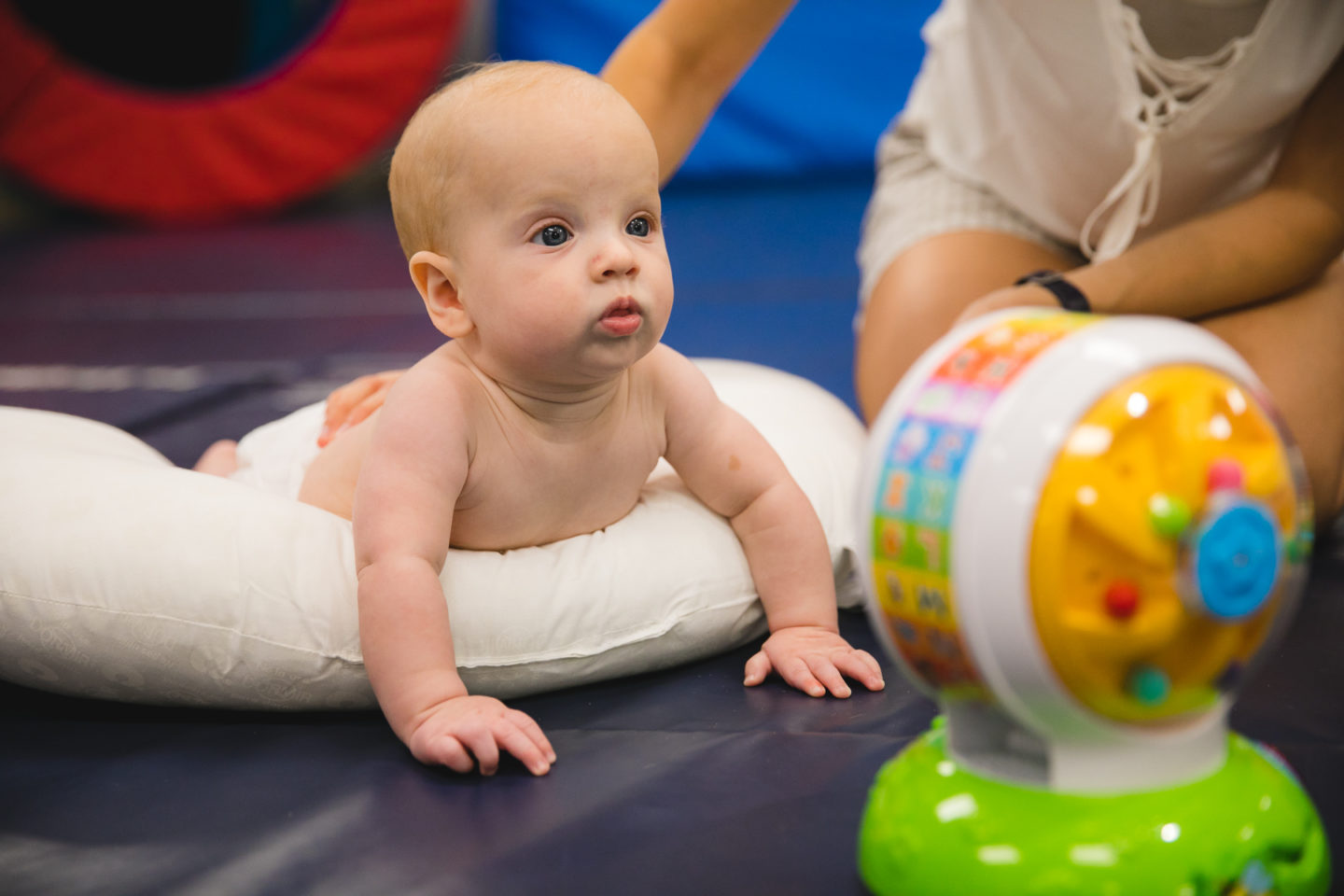
Services available through Mary Free Bed Kids include:
Mary Free Bed Kids treats children affected by torticollis and deformational plagiocephaly. Torticollis affect the muscles that help your baby turn his or her head. Deformational plagiocephaly is a flattening or misshaping of the head.
If your child is diagnosed with torticollis, we’ll focus on helping him or her improve neck motion, use arms and legs symmetrically, increase hand-eye coordination and strengthen core muscles. This will make it easier for your child to develop age-appropriate motor skills.
Torticollis and deformational plagiocephaly often occur together. Mary Free Beds Kids can address either or both diagnoses, depending on your child’s needs.

Our experienced clinicians can evaluate the asymmetries of your child’s head shape to confirm a plagiocephaly diagnosis. We will give a recommendation for continued repositioning or to move forward with a cranial remolding orthosis.
Torticollis is a shortening or tightening of the muscle that goes from behind the ear to the front of the neck (called the sternocleidomastoid muscle). This muscle helps your baby turn his or her head and bring his or her ear down to his or her shoulder.
Torticollis can be caused by several things, including:

Deformational plagiocephaly is an abnormal shape of an infant’s skull caused by external forces. This can appear at the time of your child’s birth or in the first few months. Parents and grandparents often are the first to notice this difference in head shape. Talk to your pediatrician if you have questions or concerns about your child.
Common signs of deformational plagiocephaly include:

Other forms of deformational plagiocephaly we treat in our program include:
Deformational brachycephaly:
Deformational asymmetrical brachycephaly: A combination of plagiocephaly and brachycephaly
Deformational scaphocephaly: A long narrow head shape; typically much longer than wide
Torticollis and deformational plagiocephaly often occur together, but not always. Mary Free Bed’s program addresses either, or both, diagnoses.
Left untreated, the long-term effects of torticollis and deformational plagiocephaly can include gross motor difficulties, vision problems, facial and ear asymmetry and asymmetric jaw development in moderate or severe cases.
We’ll start by ensuring your baby receives a clinical evaluation to determine what, if any, complication exists.
If deformational plagiocephaly or congenital torticollis is confirmed, you can start by repositioning your baby in the opposite direction he or she prefers to look during play and sleep. Also, have your baby spend time on his or her stomach during waking hours and do therapy-directed stretching to loosen tight muscles. Repositioning your baby’s head during sleep also helps redistribute the pressure on his or her skull. An evaluation can help educate you on proper repositioning and tummy-time techniques.
Services available through Mary Free Bed Kids include:
A physical therapist will talk with you about your child’s medical history and current torticollis and plagiocephaly symptoms. They will evaluate:
An occupational therapist will assess your child’s range-of-motion, control of shoulder muscles and bones and the structure of his or her face and neck. They will also evaluate your child’s fine motor skills and visual perceptual development.
We’ll coordinate with other experts at Mary Free Bed to provide your child with the best possible care. This may include working with our on-site orthotics program for cranial remolding treatment when necessary for cranial reshaping or neck collars when needed for retraining.
We will monitor your child to ensure he or she is on track to hit developmental milestones and continued healthy patterns for movement.
Physical and occupational therapists work with your child on:
Family involvement is a key component of our program. Our rehabilitation experts educate you on positioning, stretching and play activities that support your baby’s therapy goals. You’ll receive training and support to ensure your child’s treatment continues at home and in other settings.
Grand Rapids
616.840.8005
800.668.6001
Holland
616.294.4066
616.840.8005